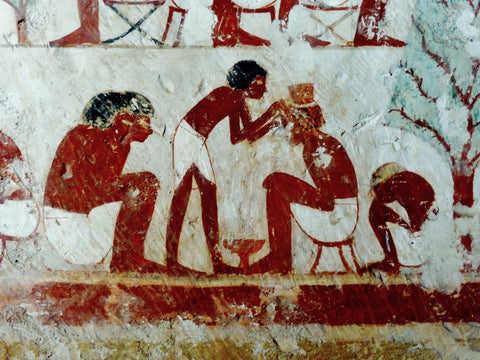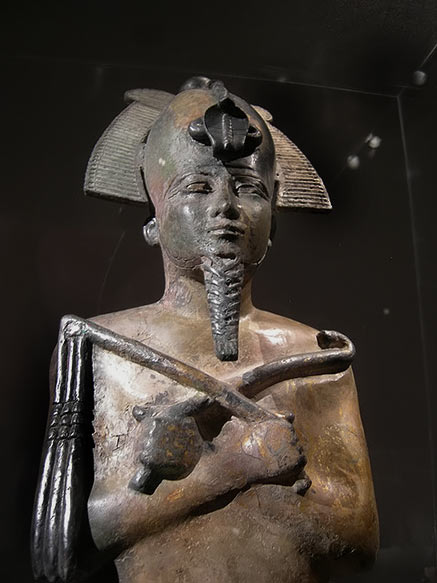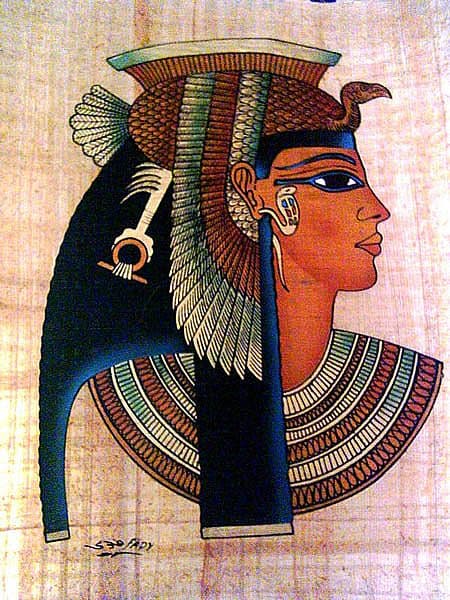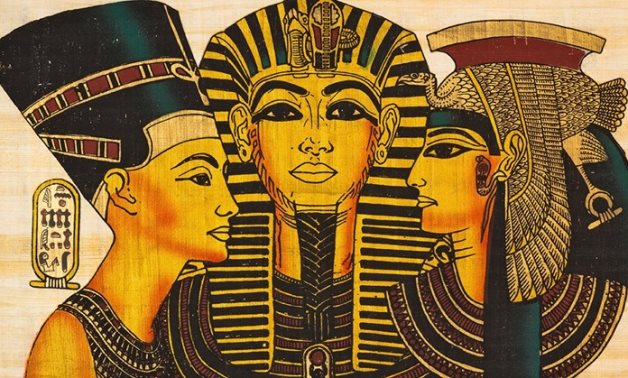When learning about ancient civilizations, some of the most fascinating topics come from their habits in day-to-day life. While it’s great to read and watch about the greatest battles fought by ancient civilizations, there comes a time when you want to dive deeper into how they used to live. When it comes to ancient Egypt, there’s quite a lot we know about their culture, but some are more popular than others.
For example, we know all about the Great Pyramid of Giza and many other tombs of famous pharaohs, but what about the physical characteristics of the average Egyptian? Was makeup a common practice? What materials did they use for makeup? What about hairstyles? All of these questions are worth asking, and the answers are all below. Here are some of their physical features explained.
The General Features (mostly from the face)

Unlike certain civilizations such as the Greeks, the Egyptians are a little trickier to figure out as far as physical features go. That said, Greek sculptures often showcased what they thought was the ideal of both men and women—it’s the reason why all the sculptures featured great muscle tones and beautiful facial features. In the case of the Egyptians, many of their features are similar to what you might see of the Egyptians today, depending on the dynasty.
There are a few differences, of course, especially when it comes to matters of culture. However, the line is blurred in many aspects, making it challenging to figure out the physical features of the average ancient Egyptian. The dynasties span thousands of years, so the features can vary depending on the timeline. We’re going to find some common ground and make it easier to understand what the ancient Egyptians went through!
Facial Hair

It’s easy to gauge how much an ancient civilization prefers facial hair based on their depictions of great leaders. That said, the depiction of many pharaohs includes clean-shaven men. However, there was a time before that when the ancient Egyptians were known to favor the heavily bearded, messy look. Similar to many other ancient civilizations, a full beard was often associated with maturity and strength. It was also a symbol of fertility, so you can bet that the men were trying their best to grow beards as much as they could.
Eventually, the clean-shaven look was adopted by the ancient Egyptians, especially during the time of pharaohs. As a matter of fact, being a barber was a prolific job back in the day, as royalty had a tendency to shave off body and facial hair. Grooming was quite the trend.
Hairstyles

One thing about ancient Egyptians that’s more commonly accepted today is that the inhabitants of ancient Egypt were indigenous Africans. Naturally, the hairstyles of Egypt depended heavily on the hair of their race, and as indigenous Africans, they didn’t afford too many choices. However, it doesn’t mean that there weren’t any interesting tidbits about ancient Egyptian hairstyles.
For example, did you know that the Egyptians heavily favored wigs? While they had a habit of shaving hair and going for as clean a look as possible, they still preferred thick hair, especially during religious ceremonies. The wigs were usually made of animal hair, and were often improved with luxurious oils and scents. In an age of the clean-shaven trend, thick hair was a sign of wealth, which was why wigs were so popular. Straight hair was known to exist at the time, but it was much rarer.
Nose Shape

It’s funny that in most ancient Egyptian sculptures, the nose is usually the most damaged part of the face. That said, there are still quite a few examples out there showcasing the faces of ancient pharaohs, and it can be used as a clue to figure out the nose shape of ancient Egyptians.
However, just because the sculptures show a specific nose shape doesn’t necessarily mean that it was the nose shape of the average Egyptian. Typically, the sculptures showcase the look of the ideal Egyptian, as pharaohs were seen as gods. The average ancient Egyptian had a prominent nose bridge, and protrusive lips. As indigenous Africans, you can get an idea of what ancient Egyptians looked like. With the introduction of the Greeks and the Persians, the mingling resulted in differences of facial features.
Height

The thing about height is it’s not always easy to figure out the average height of an ancient civilization. For example, we can’t just use sculptures, as many of them are either much too big, or much too small. If we can’t realistically figure out their height based on artifacts, the ideal solution is to find the mean height based on a sample of human remains.
Archaeologists were able to gather information based on 150 skeletons of both men and women. The average height of the former was around 167.9cm (or 5ft 6in), and the latter was around 157.5cm (or 5ft 2in). The results weren’t much different from the Egyptians of the modern era. While there are undoubtedly many physical differences, it seems like the height remains the same throughout Egyptian history.
Weight

What does it mean to calculate the average weight of an ancient civilization? When it comes to the height, you can still figure it out based on skeletal remains. However, what about the weight? You can’t figure out the weight based on skeletal remains, though an understanding of the diet can shed some light into the weight of the average ancient Egyptian.
There will always be a difference in lifestyle between the wealthier and poorer classes. While you can expect the wealthy classes to have healthier bodies, the ones who can’t afford to eat consistently will always have far less meat on their bones. As such, the average Egyptian bodyweight was likely much lower than what we see today. Backbreaking labor also has an effect on weight.
The Typical Body

The ancient Egyptians preferred to represent themselves with the ideal body (for them), which is why many Egyptian paintings showcase a similar body type across most works. As stated above, the typical Egyptian’s body weight was probably far lower than the average body weight today, as times were rough in the age of the ancient Egyptians. The climate was hot and harsh, and many of the lower classes were subject to backbreaking labor.
As far as the wealthier classes go, their diet can be seen as healthier compared to the diet of the average American today, which means their typical body type was average all around. The bodies of the lower classes that dealt with manual labor were lean and muscular, but likely malnourished.
Makeup Habits

The ancient Egyptians were well-known for pioneering the use of ink, as well as the creation of papyrus sheets. To create the ink, they used all sorts of ingredients, including soot. They not only made black ink, but red ink as well by replacing the soot with other materials. Naturally, the Egyptians used a similar process for their makeup. They used a material called galena (or kohl), as well as malachite powder to give it a green hue.
The Egyptians believed that the galena protected their eyes from the sun and offered all sorts of benefits, which was why men and women both wore makeup—specifically around the eyes. It wasn’t necessarily a status symbol, but some of the wealthier individuals certainly wore it that way. Makeup was much more common in all social classes compared to other ancient civilizations.
Skin Tone

When you look at the hot climate of ancient Egypt, it’s hard to imagine any skin tone other than dark. Truth be told, the Egyptians before the first dynasty likely had extremely dark skin, like most other indigenous Africans. The skin color remained similar over the course of Egypt’s many dynasties, but there were some examples of a lighter skin tone.
That said, even lighter skin tones would eventually darken under the Egyptian sun. Even the introduction of the Greeks and the Romans wouldn’t change that fact. The skin tone of the Egyptians today remains largely the same as it was before.
Dressing Habits

When you look at the various paintings and sculptures featuring Egyptian royalty, they’re often covered with beautiful jewelry outside of their distinct ancient Egyptian way of dressing. In many ways, the different social classes of ancient Egypt dressed similarly, though it became more ornate as you went from the poor to the right. That said, even the poorer classes had jewelry, as the ancient Egyptians were quite fond of looking their best.
When mixed with their propensity for makeup, it can make the average Egyptian look quite sophisticated compared to the rest of the world—especially at the time. The Egyptian elite would even hire hairdressers to take care of their wigs and hair.